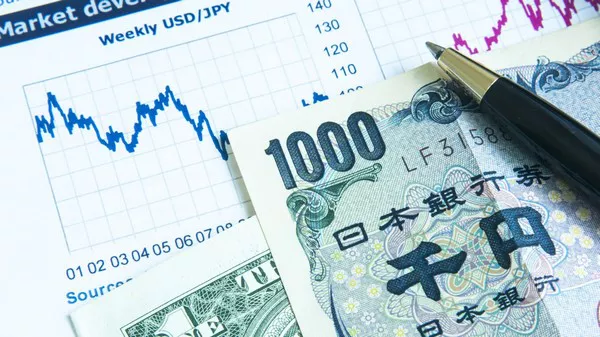Currency, as a medium of exchange, has played a crucial role in the economic development and cultural identity of nations throughout history. Japan, a nation with a rich and diverse cultural heritage, boasts a currency that reflects its unique journey through time – the Japanese yen. In this article, we will delve into the origins and evolution of the Japanese yen, exploring the historical context that led to its creation and its impact on the economic landscape of Japan.
The Birth of the Japanese Yen:
The concept of a unified currency for Japan can be traced back to the Meiji Restoration of 1868. Prior to this period, Japan had a variety of regional currencies and monetary systems, causing inefficiencies and hindering economic growth. Recognizing the need for a more stable and centralized monetary system, the Meiji government embarked on a series of reforms.
It was during the early years of the Meiji era that the yen was officially introduced. In 1871, the government passed the New Currency Act, which laid the foundation for a modern and uniform currency. The new currency was named the yen, drawing inspiration from the Chinese character “圓,” meaning “round” or “circle.” This marked a significant departure from the previous era’s complex system of mon, koban, and other regional currencies.
Key Features of the Early Yen:
The new Japanese yen was introduced with several distinctive features. One of the most notable aspects was its adoption of the gold standard. Japan aimed to align its currency with international standards, and the gold standard provided stability and confidence in the monetary system. This move facilitated international trade and bolstered Japan’s standing in the global economic arena.
The yen was initially minted in various denominations, including gold, silver, and copper coins. These coins featured intricate designs that often incorporated symbols of Japan’s cultural and historical heritage. The shift towards a standardized currency contributed to the nation’s economic modernization, as it streamlined financial transactions and promoted economic growth.
Expansion of the Yen’s Influence:
As Japan continued to modernize and industrialize during the late 19th and early 20th centuries, the yen’s influence expanded both domestically and internationally. The establishment of the Bank of Japan in 1882 played a pivotal role in regulating the currency and maintaining its stability. The central bank’s functions included issuing banknotes and controlling the money supply, contributing to the yen’s credibility as a reliable form of currency.
By the early 20th century, the yen had become a symbol of Japan’s economic prowess. The currency’s value was pegged to the gold standard, and Japan’s commitment to fiscal responsibility bolstered its reputation among the global community. The yen’s acceptance in international trade further solidified its status as a key player in the world economy.
Challenges and Transformations:
The mid-20th century brought significant challenges and transformations to the Japanese economy and, consequently, the yen. The aftermath of World War II saw Japan’s economy in ruins, and the yen underwent a series of devaluations. The Bretton Woods Agreement in 1944 established a fixed exchange rate system, with the yen pegged at 360 yen to the U.S. dollar. However, Japan’s post-war reconstruction efforts led to a gradual economic recovery, and the yen’s value strengthened.
In 1971, the collapse of the Bretton Woods system prompted a shift towards a floating exchange rate regime. The yen, no longer bound by a fixed rate, experienced fluctuations in its value against other currencies. This new flexibility allowed Japan to respond more effectively to economic challenges and facilitated its emergence as an economic powerhouse.
The Plaza Accord of 1985 marked another significant turning point for the yen. In an effort to address trade imbalances, major economies, including Japan, agreed to intervene in currency markets to devalue the U.S. dollar. This resulted in a substantial appreciation of the yen, reaching an all-time high in the late 1980s. The so-called “yen bubble” had far-reaching implications for Japan’s economy, contributing to both economic prosperity and subsequent challenges.
Contemporary Landscape:
In the 21st century, the Japanese yen continues to be a major player in the global economy. Its value remains influenced by various factors, including economic indicators, geopolitical events, and monetary policy decisions. The Bank of Japan continues to play a central role in maintaining stability and implementing policies to address economic challenges.
The yen’s role as a safe-haven currency became particularly evident during times of global economic uncertainty. Investors often flock to the yen as a refuge during financial crises, reinforcing its status as
a reliable store of value. This unique characteristic has positioned the yen as a crucial component of international finance and trade.
See Also: Why Do People Invest In Yen?
Conclusion:
The creation of the Japanese yen in the late 19th century marked a crucial step in Japan’s journey towards economic modernization. From its humble beginnings as a unified currency during the Meiji era to its current status as a global economic powerhouse, the yen has weathered various challenges and transformations. Its evolution reflects not only the economic history of Japan but also its cultural identity and resilience.
As we look to the future, the Japanese yen is poised to continue its role as a key player in the global financial landscape. The currency’s journey is a testament to the interconnectedness of history, economics, and culture, illustrating how a nation’s currency can both shape and be shaped by its unique story.


